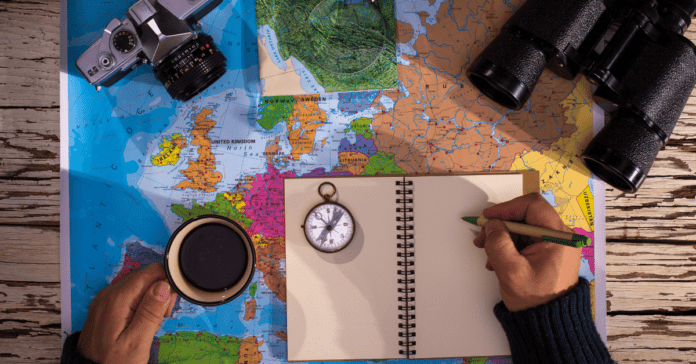Writing a story is a process made of ideas. It’s rather simple to write down what you have inside your head, but it’s less simple to write a good story, one that engages the reader on multiple levels.
This is especially true in the case of a travel story. The best travel stories have the power of transporting the reader to places they might have never been to. And when a travel story is engaging, it can inspire others to explore, to leave, and go somewhere else.
However, it can be challenging to write about your own travel experiences. With this article, we want to give you some tips to craft the most engaging travel story.
The first question that will pop up in your mind is: “how do I start?”.
The best way to open a great story is to have a clear episode in your mind. There is something relevant that happened on your trip?
Use that episode to open your story, and let the tale flow from there. Travel stories usually start in ‘medias res’, which means in the middle of an event.
In this way, the reader is already engaged in what you are writing because you are telling them something interesting… and they will want to know more about it.
I woke up suddenly, and my alarm clock was already ringing. I grabbed my phone to turn the annoying sound off, and when I looked at the time, I didn't realize it immediately: 11:30 am. I froze in the spot for a moment. It couldn't be. The first alarm clock was set at 9 am. I couldn't believe I didn't hear any of the million alarms I had set. I was so late! All my stuff was unpacked, I had to take a shower, have breakfast, and then go to the bus station, which was not close to the apartment, to catch the bus for my next destination at 12 pm... There was no way I could make it!
After this opening, the reader is curious of knowing if you succeeded in catching the bus, and where it will take you.
From the story proposed above, another element of an engaging story emerges. It’s fundamental to evoke emotions in the reader.
For example, the subtle sense of panic following the realization that it is super late and you may not be able to catch the bus.
Every detail of the story is potentially emotion-evoking, and you should constantly recall how you felt in the specific situation you are writing about.
Use negative emotions (such as panic, anger, bewilderment) as well as positive ones (for instance, humor, love, wonder) to keep the reader engrossed in the story and curious about your next moves.
Another great way to arouse emotions in the reader is to write a story that invokes multiple senses.
Sensory images create sensations and feelings, and the reader will experience them based on memories of similar episodes they experienced or based on their imagination.
Here are some examples you might be inspired by.
- Hearing: regional music in the background of a bar; the sound of ocean waves crashing into a cliff face.
- Sight: the astonishing flashes of Las Vegas Strip’s lights; the crystal blue of a lake surrounded by the lush green of a field.
- Smell: the spices a the local market; the fresh smell of pine trees branches in a forest.
- Taste: the hotness of the habanero pepper you had the audacity to try eating; the tangy flavor of the local drink.
- Touch: the sensation of warmth on your skin when the sun kissed it.
Every story is made then of characters. If you met interesting people during your trip, write about them. And don’t forget that you are a character in the story too! So talk about your emotions, hopes, and plans to give the reader a sense of knowing you.
And the last element that you need to keep in mind to write an engaging story is its end. If the first paragraph is important because it is what grabs the reader’s attention, the epilogue is even more so.
What the reader will remember is how the story ends.
The epilogue is the dessert of a story: it’s what sticks with you after the end of the meal.
To perfectly close your story, evoke (again) strong emotions by describing how and why the trip you are writing about was, and still is, relevant for you.
Did it change you in some (or multiple) ways? Tell it.
The point of an engaging travel story is to make the reader dream of your story, and – why not – give them ideas for their next trips.
If you want to be inspired on how to craft your engaging travel story, here are some travel bloggers who definitely know how to write one.
Along Dusty Roads: https://www.alongdustyroads.com/posts/nouvelle-aquitaine
Oneika the Traveller: http://www.oneikathetraveller.com/victoria-falls-bridge-swing.html
Matthew Woodward: http://www.matthew-woodward.com/2018/09/the-dogu-express-from-ankara-to-erzurum.html/
Global Help Swap: https://globalhelpswap.com/climbing-the-sand-dunes-in-the-gobi-desert-mongolia/



